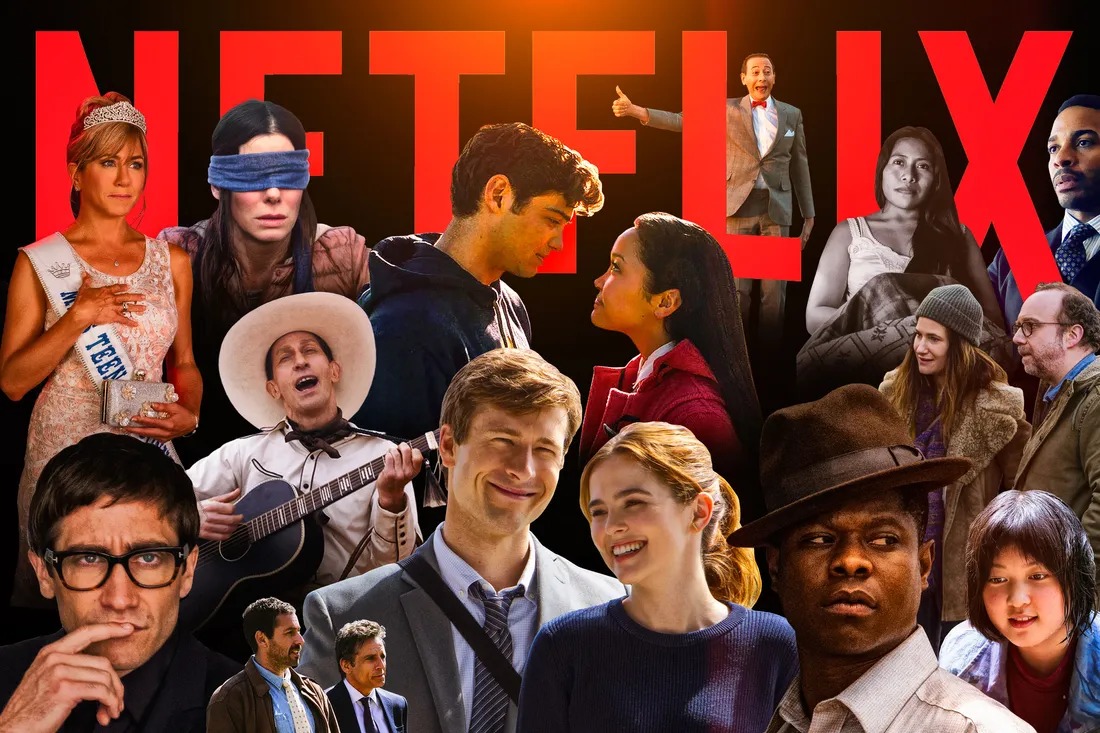Aaron The Plumber Fight Video Twitter The Viral Clash That Took Social Media by Storm
In today’s hyper-connected digital era, moments captured on video can instantly become cultural phenomena, sparking debates and inspiring creative reinterpretations across social media platforms. One such incident involves Aaron, a local plumber whose altercation was recorded and rapidly shared on Twitter. The video, known as “Aaron the Plumber Fight Video,” illustrates not only a moment of interpersonal conflict but also the overwhelming power of online communities to turn a private dispute into a public spectacle.
This essay delves into the circumstances behind the video, explores the cascade of reactions on Twitter, and examines the broader implications for both those directly involved and the online community at large. By dissecting the incident from multiple angles, we can better understand the nuances of viral content, the delicate balance between humor and criticism, and the lessons that can be learned about conflict management in the digital age.
Social media today functions as both a public forum and an echo chamber, where content—no matter how mundane or dramatic—can gain traction rapidly. In this analysis, we will review the origin of the incident, the role of social media platforms (especially Twitter) in amplifying the content, and how public sentiment shapes the narrative surrounding such events. We will also consider the impact on Aaron’s personal and professional life and discuss the broader implications for viral media in an era dominated by online engagement.
THE INCIDENT: WHAT HAPPENED IN THE VIDEO
The story begins on what appeared to be an ordinary day in the life of Aaron, a dedicated plumber known for his hardworking attitude and commitment to quality service. Aaron had spent years building his reputation by resolving a variety of household plumbing issues—from routine repairs of leaking faucets to complex system installations. However, on this particular day, an unexpected altercation broke out between Aaron and a homeowner, capturing a moment of raw emotion and conflict.
The video shows Aaron engaged in a dispute with the homeowner over the quality and timeliness of the plumbing work. What initially began as a verbal disagreement quickly escalated into a physical confrontation. Tools were brandished, voices were raised, and onlookers soon gathered, drawn by the intensity of the confrontation. The clip was recorded by a bystander and, within moments, was shared online.
Key details from the incident include:
Unexpected escalation: What started as a discussion about plumbing issues turned into a heated argument in just a matter of seconds.
Public spectacle: The presence of onlookers, who later contributed to the spread of the video, underscores how easily private disputes can transform into public events when captured on camera.
Tools as symbols: Aaron’s use of his plumbing tools in the altercation added a layer of irony to the incident, highlighting the contrast between the routine nature of his profession and the extraordinary circumstances of the fight.
This incident is emblematic of a broader phenomenon where everyday professionals find themselves in situations that defy expectations, their private conflicts unexpectedly thrust into the public spotlight. The recorded moment not only documents a personal crisis but also sets the stage for a viral explosion on social media platforms.
THE TWITTER EFFECT: FROM LOCAL DRAMA TO VIRAL SENSATION
Once the video was uploaded to Twitter, it rapidly evolved from a local dispute into a full-blown digital sensation. Within hours, Twitter users across the globe began sharing the clip, accompanied by hashtags such as #AaronThePlumber and #PlumbingFights. The speed at which the video was disseminated underscores the influential role that platforms like Twitter play in shaping public discourse.
Several factors contributed to the video’s viral status on Twitter:
Instantaneous Sharing: Twitter’s design, favoring brief and immediate content, allowed the video to be retweeted and shared multiple times within a short time span. The simplicity of the platform’s interface, combined with the prevalence of mobile internet usage, enabled rapid distribution of the content.

Hashtag Culture: The use of trending hashtags provided the video with additional visibility, drawing in users who might not have been directly connected to the original uploader. This hashtag culture not only categorized the content but also served as a rallying point for public reaction, as users joined in on the conversation with their own comments and memes.
Memetic Transformation: As the video circulated, creative users began reinterpreting the content by turning it into memes, parodies, and gifs. This creative repurposing is a hallmark of internet culture, where a raw, unedited moment can be transformed into various forms of entertainment. Humor became a key aspect of the video’s reception, with many finding amusement in the juxtaposition of a mundane profession with such an unexpected outburst.
Beyond the rapid spread, Twitter also enabled the formation of a digital narrative around the video. Users debated whether the fight was justified, laughed at the absurdity of the situation, or expressed concern over the implications of such behavior in a professional setting. This multifaceted discussion is a testament to how digital platforms can turn isolated incidents into widespread conversations about behavior, professionalism, and the impact of public shaming.
REACTIONS AND RESPONSES: THE PUBLIC SPEAKS
The public reaction to “Aaron the Plumber Fight Video” has been as diverse as it has been intense. Twitter, with its eclectic mix of users ranging from casual onlookers to seasoned commentators, became a forum for a wide array of opinions and emotions.
Humorous Takes and Memes:
Many users embraced humor as a coping mechanism, crafting jokes and memes that highlighted the absurdity of the situation. Tweets such as “Who knew plumbing could be so dramatic?” and “Aaron, the unsung superhero of household repairs,” became popular. These humorous responses served to lighten the mood, turning a potentially negative incident into a source of entertainment and shared cultural commentary. The meme culture surrounding the video demonstrated how humor can often be a powerful tool in diffusing tension and encouraging a sense of community among strangers online.

Critical and Disapproving Voices:
Not all responses were lighthearted. A significant portion of the commentary was critical, focusing on the violent nature of the confrontation. Many users expressed concern about the escalation of what should have been a simple service call into a full-blown physical altercation. Comments ranged from urging for better conflict resolution techniques to questioning the behavior of both the plumber and the homeowner. This critical perspective reflects broader concerns about how disputes are handled in professional contexts and raises questions about workplace stress, anger management, and professional conduct.
The Duality of Public Opinion:
The debate on Twitter illustrates a duality common in viral incidents. On one side, there is a celebration of the unexpected humor in the situation—a form of digital schadenfreude where users relish the incongruity of a plumber caught in a dramatic fight. On the other side, there is a sobering reminder of the real-life implications of such conflicts. For many, the video is a cautionary tale about how quickly professional reputations can be tarnished by moments of loss of control. The multiplicity of reactions underscores how public opinion on social media can be as volatile as it is influential, with every viewer bringing a unique perspective to the discussion.
Media and Professional Reactions:
In addition to individual tweets, several media outlets and commentators have weighed in on the incident. Some have drawn parallels between this case and other viral moments, suggesting that the incident is indicative of a broader cultural trend where everyday events are magnified through the lens of social media. Others have discussed the potential career ramifications for professionals who become unwilling celebrities due to viral content. The collective response from both the public and the media has forced a re-examination of how society perceives professionalism and accountability in the digital age.
THE IMPACT ON AARON’S LIFE: PERSONAL, PROFESSIONAL, AND SOCIAL CONSEQUENCES
For Aaron, the viral video represents a turning point—a moment that has irrevocably altered his everyday life and professional trajectory. Overnight, a routine service call transformed into a global spectacle, placing his actions under intense scrutiny and exposing him to both praise and criticism.
Professional Repercussions:
Aaron’s sudden notoriety has brought both opportunities and challenges. On the one hand, his newfound fame could lead to increased business as people become curious about the “plumber who got into a fight.” However, the negative connotations associated with the incident cannot be overlooked. Many potential clients may question his ability to manage stressful situations or handle conflicts calmly. In an industry where trust and reliability are paramount, such an incident can have lasting repercussions. The viral nature of the video means that a single moment of frustration now defines his public persona, overshadowing years of professional dedication.

Personal Challenges and Emotional Toll:
The public exposure has undoubtedly taken a toll on Aaron’s personal life. Being thrust into the spotlight without consent can be a distressing experience, and Aaron now faces the dual burden of managing both public opinion and his personal emotions. The ridicule and harsh criticism coming from a vast online audience might lead to feelings of isolation or regret. This situation is a stark reminder of the personal risks associated with virality—where a moment captured on video can transform an individual’s life in unpredictable ways.
Social and Community Impact:
Within his local community, Aaron’s reputation has become a subject of heated discussion. Neighbors and clients alike are now aware of the incident, and while some view it with humor, others see it as a blemish on his otherwise reliable career. The incident has sparked debates about workplace stress and the importance of maintaining professionalism, even in the face of provocation. For many, Aaron’s experience serves as a lesson in how quickly circumstances can change in the digital era, where one mistake can be magnified far beyond its original context.
A Call for Reflection and Growth:
The impact of the video has also led to discussions about the importance of conflict resolution and anger management. Many observers suggest that situations like these call for professional development and personal reflection. Aaron’s experience could inspire others in similar high-pressure jobs to seek guidance or training in managing stress. In this light, the incident, while unfortunate, might also act as a catalyst for positive change—both for Aaron and for professionals who face similar challenges.
ANALYZING THE VIRAL PHENOMENON: LESSONS FROM THE DIGITAL AGE
The rapid spread of “Aaron the Plumber Fight Video” on Twitter provides a rich case study for understanding the dynamics of viral content in the digital age. Several key themes emerge from this phenomenon, offering insights that extend far beyond the particulars of one incident.
The Unpredictability of Virality:
One of the most striking aspects of the incident is the sheer unpredictability of viral content. What begins as a private dispute can, in the span of a few hours, become a topic of global conversation. This unpredictability stems from several factors, including the ease of sharing on platforms like Twitter, the influence of hashtag culture, and the collective participation of a diverse audience. Viral content often depends on a complex interplay of timing, context, and audience sentiment—a combination that is impossible to fully control or predict.

Digital Accountability and Public Shaming:
The incident raises important questions about digital accountability. On one hand, the public has the right to express opinions about behavior that deviates from accepted norms. On the other, the relentless scrutiny that follows can lead to disproportionate consequences for the individuals involved. Aaron’s case exemplifies how quickly online communities can mobilize to pass judgment, sometimes without full knowledge of the circumstances or the person behind the moment. This dynamic is a double-edged sword, offering both a mechanism for social accountability and a potential source of unwarranted public shaming.
The Role of Humor in Mitigating Conflict:
Humor has emerged as a significant coping mechanism in the face of viral mishaps. By transforming a tense and potentially damaging situation into a source of comedy, online communities can alleviate some of the negative emotional charge associated with public conflict. However, while humor can be cathartic, it also risks trivializing the underlying issues that led to the conflict. In Aaron’s case, the playful memes and humorous tweets helped diffuse tension for many, but they also underscored the irony of the situation—a skilled professional reduced to a punchline.
Implications for Professional Conduct and Social Media Strategy:
For professionals, the incident is a stark reminder of the importance of maintaining composure under pressure. In an age where every interaction has the potential to be recorded and shared, the stakes for personal and professional behavior have never been higher. Companies and service providers might use such incidents as case studies to develop better training in conflict resolution and customer interaction. Additionally, public figures who find themselves in the viral spotlight can benefit from proactive social media strategies that help manage their reputation and communicate their side of the story effectively.
A Reflection on the Nature of Online Communities:
Finally, the viral spread of the video provides a window into the collective behavior of online communities. Social media users are both consumers and creators of content, and their collective reactions shape the narrative surrounding any given event. The diversity of opinions—from lighthearted amusement to harsh criticism—demonstrates the complexity of digital discourse. This phenomenon invites further reflection on how online communities can foster both connection and division, and what responsibilities come with wielding the power of digital platforms.
“Aaron the Plumber Fight Video” is more than just an isolated incident—it is a microcosm of how digital media, public sentiment, and professional conduct intersect in our modern world. As we have explored throughout this essay, the event encapsulates the unpredictable nature of virality, the dual-edged power of public shaming, and the potential for humor to both heal and trivialize serious issues.
For Aaron, the incident represents an unexpected turning point—a moment that has permanently altered his personal and professional narrative. While the video catapulted him into a realm of notoriety, it also forced him and his community to confront broader issues such as stress management, conflict resolution, and the responsibilities that come with the digital age. In a world where a single tweet or retweet can redefine one’s reputation, the importance of measured responses and emotional control cannot be overstated.
The digital landscape is evolving, and incidents like these serve as both cautionary tales and opportunities for learning. They remind us that while social media offers unprecedented avenues for connection and expression, it also carries the risk of amplifying human flaws and missteps. As we move forward, both individuals and organizations must grapple with the implications of a world where privacy is fleeting and every moment can become a public spectacle.
Ultimately, the legacy of “Aaron the Plumber Fight Video” will be measured not solely by the fleeting laughter it provoked or the memes it generated, but by the deeper conversations it has ignited about the nature of digital accountability, professional behavior, and the transformative power of social media. For anyone who has ever found themselves caught in an unexpected moment of public scrutiny, Aaron’s experience is a poignant reminder of the power—and peril—of going viral.
News -
Aubreigh Wyatt Doll Video 2 The Viral Sensation Captivating Audiences Worldwide
Jacob Savage Dryer Video With Rachel The Viral Moment That Captivated the Internet
Video Bokep Indonesia Terbaru Trends, Challenges, and Digital Evolution
Nyannie Armored Core 6 Toy Video 2 A Creative Fusion of Mechs and Miniature Art
Johnson Justin Video Reddit The Viral Sensation Taking the Internet by Storm
Maegan Hall Video Twitter The Viral Phenomenon and Its Impact on Digital Culture
Video Bulan Sutena 1 Menit The Art of Captivating Storytelling in Just 60 Seconds